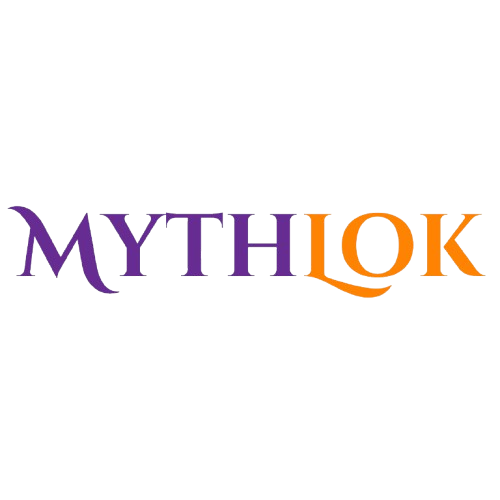Alalia : The Lingering Ghost
Listen
At a glance
| Description | |
|---|---|
| Origin | Philippine Mythology |
| Classification | Ghosts |
| Family Members | N/A |
| Region | Philippines |
| Associated With | Haunting |
Alalia
Introduction
In the layered spiritual landscape of Philippine mythology, Alalia—sometimes pronounced Araria—emerges as a haunting yet deeply emotional figure rooted in Ilocano folklore. Unlike gods or nature spirits, Alalia is not worshipped, but remembered—seen as the soul of a deceased person that returns briefly to the mortal world after death. Its presence is a quiet echo, not a thunderclap; a breath of remembrance rather than a force of divine power.
Associated with the final moments of life, Alalia is believed to manifest as faint sounds or subtle shifts in the atmosphere. It is often detected through the howling of dogs or sudden chills, interpreted as signs that the spirit is near. These beliefs are interwoven with the Filipino respect for ancestral spirits and the rituals designed to honor the dead. In this way, Alalia reflects both fear and reverence—the spiritual residue left behind as life transitions to death.
Physical Traits
Alalia defies conventional physical description. As a spirit rooted in memory and transition, it does not possess a fixed form. Instead, its presence is suggested rather than seen. In folklore, it is said to appear as a fleeting shadow, a dim glow, or even a cold gust of wind. This ephemeral quality symbolizes its role as a soul in limbo—no longer human, but not yet gone.
Animals, particularly dogs, are highly sensitive to Alalia. A sudden, unexplained howl in the night often signals its arrival. While it may not be visible to the human eye, its energy can be felt through emotional or sensory shifts—such as goosebumps, a change in room temperature, or a lingering sense of being watched.
Rather than possessing a body, Alalia is experienced: a presence that reminds the living of who has been lost and what remains unresolved.
Family
Unlike other figures in Philippine mythology who belong to vast divine family trees—such as Bathala or Apolaki—Alalia is born from human experience. It represents the soul of someone who has just passed away, returning for a brief visit to the places or people they once loved.
In Ilocano tradition, it is believed that the soul remains close to the world of the living during the first few days after death. This is reflected in mourning rituals such as the pa-siyam, a nine-day prayer novena held to help the soul find peace. Alalia may appear during this period to say goodbye or to check on family members.
In essence, Alalia has no divine lineage but is tied to familial memory. It is every person’s spirit, momentarily untethered, seeking closure before continuing its journey into the afterlife.
Other names
While the name Alalia is specific to Ilocano beliefs, similar spirits exist throughout Philippine culture, sometimes under different names. In the same region, Araria is often used interchangeably. These terms are hyperlocal, passed down orally through generations of Ilocano families.
In broader Filipino culture, the word kaluluwa is commonly used to refer to souls or spirits, especially those of the deceased. While not identical in meaning, kaluluwa overlaps with Alalia in concept, representing the soul in a transitional or visiting state. Additionally, anito refers to ancestral spirits or guardian entities, revered and invoked in various pre-colonial rituals. Though more spiritual and divine in nature, the anito serves a similar role in maintaining a connection between the living and the dead.
It’s worth noting that “alalia” has also historically been used in medical contexts to describe speech disorders. This etymological coincidence is unrelated but reflects the term’s broader interpretive journey through time and culture.
Powers and Abilities
Alalia is not a spirit known for dramatic displays of power or divine intervention. Instead, its influence is quiet and deeply personal, rooted in the emotional and spiritual realms. Unlike deities who command nature or alter destiny, Alalia’s strength lies in its subtle presence—often felt more than seen. It may return to familiar homes or places shortly after a person’s death, gently reaching out to loved ones through dreams, fleeting memories, or a sudden shift in the atmosphere. Even the mournful howling of dogs is often believed to signal its nearby presence, adding to its reputation as a spirit tied to transition and remembrance.
This spectral visitation often serves as a reminder of unresolved emotions or unfinished rituals. Alalia’s appearance may prompt families to complete prayers, offer tributes, or find closure through cultural mourning practices. Rather than instilling fear, Alalia encourages reflection, respect, and connection between the living and the dead. In this way, it functions as a quiet guide—gently urging peace for both realms through remembrance and ritual.
Modern Day Influence
While not as widely discussed in popular Philippine media as creatures like the aswang or tikbalang, Alalia remains deeply rooted in local spiritual practices and mourning customs. Many Filipino families still follow traditions such as the nine-day novena or the 40-day mourning period, both influenced by the idea that the spirit lingers after death.
Stories of dream visits by deceased relatives are common and often interpreted as encounters with Alalia-like entities. These experiences are not usually seen as terrifying, but comforting—a spiritual farewell or a gentle reminder to complete religious obligations.
In literature and modern Filipino horror films, themes of visitation and unfinished business echo the Alalia myth, even if the name isn’t explicitly used. Spirits appearing after death to guide, warn, or comfort are a frequent motif—blending folklore with contemporary storytelling. Additionally, the resurgence of interest in Philippine mythology in art, digital content, and indie comics has led to renewed exploration of lesser-known spirits like Alalia. These stories help preserve cultural identity while making ancestral beliefs accessible to new generations.
Related Images
Source
Ramos, M. (1990). The Creatures of Philippine Lower Mythology. Phoenix Publishing.
Eugenio, D. L. (2001). Philippine Folk Literature: The Myths. University of the Philippines Press.
Demetrio, F. R., Cordero-Fernando, G., & Nakpil, L. R. (1991). The Soul Book. GCF Books.
Aswang Project. (2016, February 22). A Compendium of Creatures from Philippine Folklore & Mythology. Retrieved from https://www.aswangproject.com/creatures-mythical-beings-philippine-folklore-mythology/
Cryptidz Wiki. (2016, October 20). Creatures and Beings of Philippine Folklore and Lower Mythology. Retrieved from https://cryptidz.fandom.com/wiki/Creatures_and_Beings_of_Philippine_folklore_and_lower_mythology
Earth Responsibly – Philippine Folklore Creatures. (n.d.). Google Sites. Retrieved from https://sites.google.com/view/earth-responsibly/biology/philippine-folklore-creatures
Grafiati. (2024, July 28). Bibliographies: ‘Philippine Mythology’. Retrieved from https://www.grafiati.com/en/literature-selections/philippine-mythology/
Marvunapp. (n.d.). Diwatas (Philippine Gods). Retrieved from http://www.marvunapp.com/Appendix/diwatas.htm
Stoic Aswang. (2015, December 23). Monsters & other supernatural beings from Filipino folklore & myths. Retrieved from https://stoicaswang.wordpress.com/2015/12/23/supernatural-beings-and-creatures-of-philippine-folklore-and-mythology/
Wikipedia. (2022, November 28). Alalia. Retrieved from https://en.wikipedia.org/?title=Alalia&redirect=no
Frequently Asked Questions
What is lorem Ipsum?
I am text block. Click edit button to change this text. Lorem ipsum dolor sit amet, consectetur adipiscing elit. Ut elit tellus, luctus nec ullamcorper mattis, pulvinar dapibus leo.
What is lorem Ipsum?
I am text block. Click edit button to change this text. Lorem ipsum dolor sit amet, consectetur adipiscing elit. Ut elit tellus, luctus nec ullamcorper mattis, pulvinar dapibus leo.
What is lorem Ipsum?
I am text block. Click edit button to change this text. Lorem ipsum dolor sit amet, consectetur adipiscing elit. Ut elit tellus, luctus nec ullamcorper mattis, pulvinar dapibus leo.
What is lorem Ipsum?
I am text block. Click edit button to change this text. Lorem ipsum dolor sit amet, consectetur adipiscing elit. Ut elit tellus, luctus nec ullamcorper mattis, pulvinar dapibus leo.
What is lorem Ipsum?
I am text block. Click edit button to change this text. Lorem ipsum dolor sit amet, consectetur adipiscing elit. Ut elit tellus, luctus nec ullamcorper mattis, pulvinar dapibus leo.














